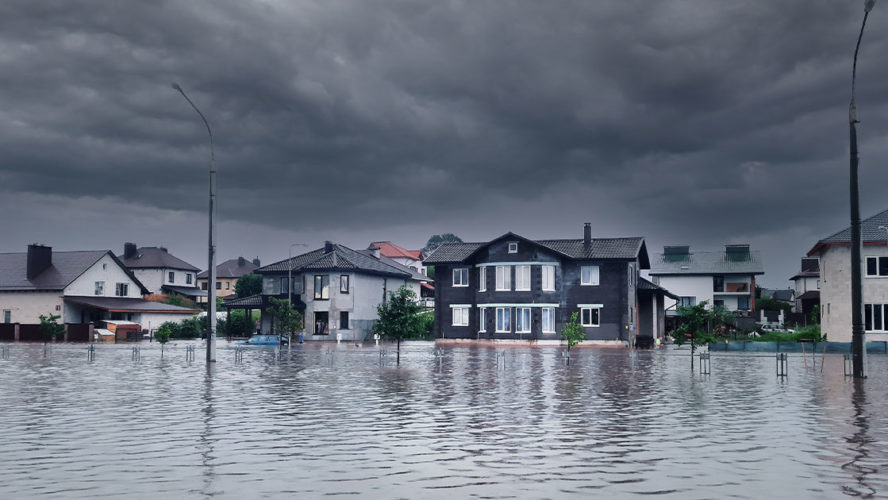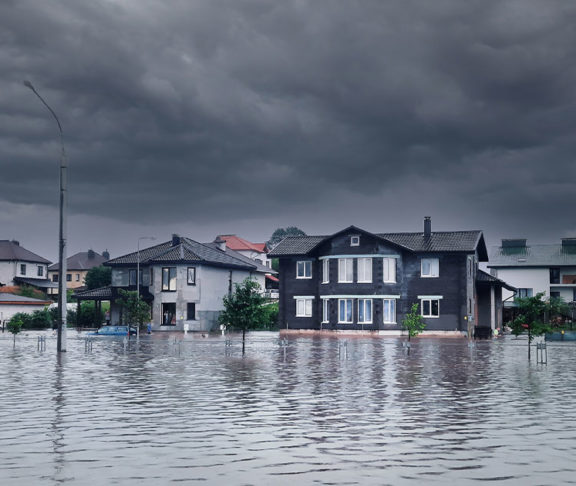Floods come in different types and sizes. So does the kind of insurance you may need to cover the damage.
Whether it’s vehicles submerged past their windows; street signs straining to peek out above the waters; soaked residents and rescue teams wading through the streets; or homes reduced to mud-splattered, splintered wreckage, floods leave vivid images in our minds. When it comes to floods, do we have the luxury of playing the odds?
According to the National Oceanic and Atmospheric Administration, floods represent “the most common and widespread of all weather-related natural disasters.” The Federal Emergency Management Agency (FEMA) reports, “Flooding can happen just about anywhere it rains or snows,” adding, “On average, 40% of the National Flood Insurance Program (NFIP) flood insurance claims occur outside the high-risk flood areas.” If you’re uncertain of your area’s risk level, check out FEMA’s flood map.
Floods also come in a variety of shapes and sizes, ranging from the devastating events to smaller crises such as sewers backing up, bathtubs or dishwashers overflowing, and pipes bursting. Though those last instances certainly aggravate and inconvenience us, they can sound more manageable. Yet, FEMA’s FloodSmart campaign notes that homeowners’ wallets can take a $25,000 hit from as little as one inch of water.
Further, different types of floods require different forms of insurance coverage, and, contrary to what you might assume, most homeowners and business insurance policies do not cover major flooding. Depending on the kind of possible water damage, you may need either an insurance rider or separate flood insurance (available through both the NFIP and some private insurers) in addition to your basic homeowners or renters plan.
What the flood
In 2019, the National Association of Insurance Commissioners (NAIC) launched “What the Flood!”, an award-winning effort to help consumers prepare before disaster strikes. As part of the campaign, NAIC listed several scenarios in a seven-question quiz and asked consumers to select the form of insurance they thought they would need depending on the type of flood.
The What the Flood! campaign encourages consumers to make sure they have a “go bag” they can easily grab on their way out the door during an emergency, be it a flood, hurricane, wildfire, or other threat. The interactive “go bag” tool presents a list of items to take along, such as a copy of your insurance policies, cash (in case the electricity goes out), medications, a battery-powered radio, your Social Security card and other identifying documents, a list of shelters, water, and more.
Visit our website at www.naic.org to take our What the Flood! quiz, discover the difference between the myths and realities related to buying flood insurance, read an FAQ, and find a list of questions you can ask your insurance agent before purchasing flood insurance.
These include finding out exactly what the policy does and doesn’t cover, the date it takes effect, if it provides Replacement Cost Value or Actual Cash Value and the difference between the two, if there are additional expenses or agency fees, and whether your community participates in the NFIP’s Community Rating System (CRS), as well as if you qualify for a CRS discount.
Floods and other natural disasters can quickly overwhelm us not only in the moment but also through the tasks their aftermaths create. By taking some basic steps in advance, such as assessing our coverage needs by speaking to an insurance agent, we can reduce our post-event burdens, recover more quickly, and help minimize the financial impact to ourselves and our communities.

